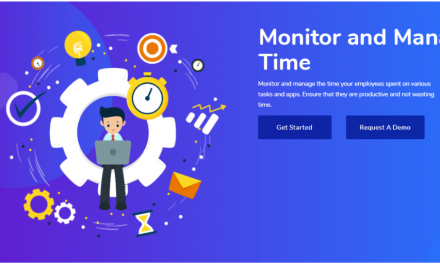Have you ever walked into the office and felt the heavy cloud of overwork hanging in the air? It’s the silent killer that drains creativity, zaps energy, and turns your once-vibrant team into a zombie horde of burnt-out professionals.
Overworked employees are like ticking time bombs, and if you don’t defuse the situation, BOOM—there goes your team’s morale, creativity, and productivity.
In this blog, we’re not sugarcoating the struggle instead let’s dive deep into the signs and solutions so that you can help your employees & never face this struggle in your workspace.
Now, Jump In!!
Listen to the Blog Now!!
What Are The Common Causes Of Overworked Employees?
Overworked employees are a common concern in today’s work environments. Various factors contribute to their plight, leading to burnout and diminished job satisfaction. Understanding these common causes is crucial for organizations to address the root issues and create a healthier work environment.
Here are some prevalent reasons behind the prevalence of overworked employees:
1. Low Headcount
One of the primary contributors to employee burnout is a low headcount. When organizations don’t have enough people to do all the work, it puts more strain on the people they already have.
This results in longer working hours, heightened stress levels, and a decline in overall job satisfaction. Companies often underestimate the importance of having an adequate number of employees to distribute tasks efficiently.
2. Unrealistic Expectations
Setting unrealistic expectations for employees can create an environment of constant pressure. When targets and deadlines are too high or too low, employees are pushed to work overtime, resulting in burnout and reduced productivity. Organizations must set achievable goals that align with the capacity and capabilities of their workforce.
3. Lack of Boundaries
The absence of clear boundaries between work and personal life is a breeding ground for overworked employees. With the advent of remote work, it has become challenging for individuals to establish a clear distinction between their professional and personal lives, causing them to be “always on.” Organizations must encourage employees to establish and maintain boundaries to ensure a healthy work-life balance.
4. Stress Outside of Work
External stressors can significantly impact employees’ ability to manage their workload effectively. Personal issues, health concerns, or financial worries can compound the stress experienced at work, contributing to burnout.
Offering support and resources for employees to cope with personal challenges is an essential aspect of promoting overall well-being.
5. Poor Planning Processes or Project Management
Inefficient planning processes and project management can lead to frequent emergencies and last-minute deadlines. This lack of structure places undue stress on employees, forcing them to work under constant pressure. Organizations should invest in robust project management tools and processes to streamline the prevention of employee burnout.
7 Signs Your Employees Are Overworked
Recognizing the signs of overworked employees is crucial for addressing the issue promptly.
Here are some key indicators:
1. Chronic Exhaustion
Persistent fatigue is a clear sign of burnout. Overworked employees may struggle to find the energy to perform their duties effectively, leading to a decline in overall productivity. Encouraging a culture of self-care and providing opportunities for relaxation can help alleviate chronic exhaustion.
2. Increased Absenteeism
When targets and deadlines are too high or too low, employees are pushed to work overtime, resulting in burnout and reduced productivity. Frequent absenteeism can disrupt workflow and contribute to a negative work culture. Addressing the root causes of absenteeism, such as excessive workload, is crucial for employee retention and well-being.
3. Presenteeism
The reluctance to take vacation or sick days, known as presenteeism, can be a sign that employees feel pressured always to be available. Organizations should take proactive steps to encourage their employees to take the necessary time off to rest and recuperate, as this can lead to a decrease in overall well-being and an increase in burnout.
4. Decreased Motivation
Overworked employees often experience a decline in motivation and enthusiasm for their work. The constant pressure and exhaustion can erode the passion and drive that employees once had for their roles. Recognizing and acknowledging employees’ efforts and achievements can reignite motivation and job satisfaction.
5. Decline in Work Quality
Excessive workload can compromise the quality of work produced. Overworked employees may struggle to maintain the same standards of excellence, leading to errors and oversights. Implementing regular quality assessments and providing constructive feedback can help employees maintain high standards even under demanding conditions.
6. High Turnover Rates
A workplace with consistently overworked employees is likely to experience higher turnover rates. Employees will seek environments that prioritize their well-being over excessive demands. Conducting exit interviews and analyzing turnover data can provide insights into the relationship between workload and employee retention.
7. High Rates of Overtime
Regularly requiring employees to work overtime may be a sign of an unsustainable workload. While occasional overtime might be necessary, chronic reliance on extended working hours can lead to burnout. Monitoring overtime patterns and addressing workload issues promptly can prevent long-term negative consequences.
8 Solutions for Managers to Help Overworked Employees
Addressing the issue of overworked employees requires proactive measures from management. Here are eight solutions to foster a healthier work environment:
1. Implement Flexible Work Hours
Consider implementing flexible work hours to allow employees greater control over their schedules. This approach enables them to balance personal and professional responsibilities effectively. EmpMonitor is a cutting-edge best workforce management solution, that can be instrumental in maintaining productivity while embracing flexibility.
Work Management Software| EmpMonitor
EmpMonitor provides real-time insights into employee activities, allowing managers to track progress without micromanaging. This tool ensures that the transition to flexible work hours doesn’t compromise the quality or efficiency of work. It’s a valuable resource for managers seeking a balanced approach to remote work.
1. Real-Time Activity Monitoring:
EmpMonitor provides real-time insights into employees’ activities, allowing employers to track work progress without the need for constant check-ins. This feature helps employers identify patterns of overwork and intervene when necessary.
2. Productivity Analysis:
The productivity analysis feature enables employers to assess how effectively their teams work. By understanding work patterns, employers can identify instances of prolonged working hours and address them to prevent burnout.
3. Customizable Work Hours:
EmpMonitor allows employers to set customizable work hours for each employee. This feature ensures that employees adhere to a defined work schedule, preventing them from exceeding the recommended working hours and reducing the risk of burnout.
4. Track Work Progress:
It allows you to keep track of ongoing projects and tasks which assists employers in evaluating the distribution of workloads among team members. And also know whether the task is on the to-do list, in progress or completed. This insight is crucial for ensuring an equitable distribution of responsibilities, preventing any single employee from being overloaded with work.
5. Employee Self-Management Tools:
EmpMonitor includes tools that empower employees to manage their workload responsibly. Features like time tracking and productivity dashboards enable employees to monitor their progress and make informed decisions about workload management.
6. Time Management Reports:
Employers can generate time management reports through EmpMonitor, offering a detailed overview of how employees allocate their time during working hours. This data can also help you to identify areas where you can increase productivity without overworking yourself.
EmpMonitor integrates these features to give employers the tools they need to proactively reduce overwork, create a healthy work culture, and improve overall employee health and well-being.
Read More:
Employee Burnout: 7 Tips To Deal With Effective Workforce Management Solutions
How To Effortlessly Prevent Employee Burnout In An Organization?
2. Encourage Regular Breaks
Promote a culture of taking regular breaks throughout the day. Studies have shown that taking short-term breaks can improve your work ethic and mental health. Encouraging employees to step away from their desks can refresh their minds and prevent burnout.
3. Set Boundaries and Stick to Them
Establish clear boundaries regarding working hours and expectations. Encourage employees to disconnect from work-related communication outside of their designated work hours. This makes it easier to have a balance between work and life, which stops things from getting too out of whack.
4. Promote Work-Life Balance
Actively promote and support work-life balance within the organization. Provide resources and initiatives that help employees manage their personal and professional lives more effectively. This may include workshops on time management, stress reduction, and effective prioritization.
5. Provide Access to Help
Make resources for mental health and well-being readily available. Employee assistance programs and counselling services can offer support for those dealing with stress and burnout. Creating a stigma-free environment where employees feel comfortable seeking help is essential for their overall well-being.
6. Lead by Example
Managers should lead by example when it comes to maintaining a healthy work-life balance. Demonstrating the importance of self-care and time management sets a positive tone for the entire team. This leadership style fosters a culture where employees feel supported in prioritizing their well-being.
7. Open Channels of Communication
Create an open and transparent communication culture where employees feel comfortable expressing their concerns. Regular check-ins and feedback sessions can provide insights into potential issues before they escalate. Establishing a supportive communication network ensures that employees feel heard and valued.
8. Balance Workloads by Understanding Data
Utilize employee monitoring software to gather data on workloads and productivity. This information can help identify areas of imbalance and guide decisions on workload distribution. By leveraging data, managers can make informed decisions to ensure that workloads are distributed equitably among team members.
Help Overworked Employees Thrive!
As we wrap up this journey into identifying and effortlessly solving overworked employees’ workloads, it’s clear that recognizing the signs is just the first step. The real game-changer lies in the solutions.
EmpMonitor, consider this your battle cry to champion a workplace revolution. The signs of quiet quitting & burnout are no match for a proactive approach that incorporates smart tools and thoughtful strategies. Empower your team with the right technology and foster an environment that values work-life balance.
Remember, a thriving team isn’t just about getting the job done; it’s about cultivating an atmosphere where each member feels supported, valued, and capable of achieving their best.














